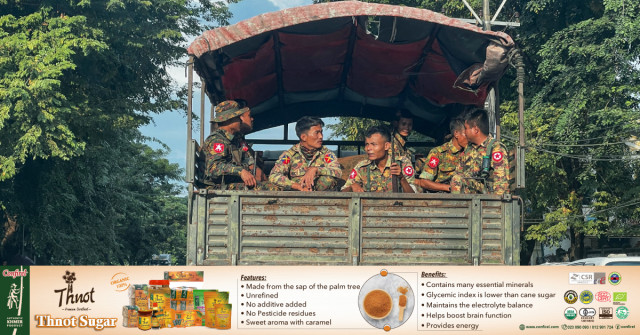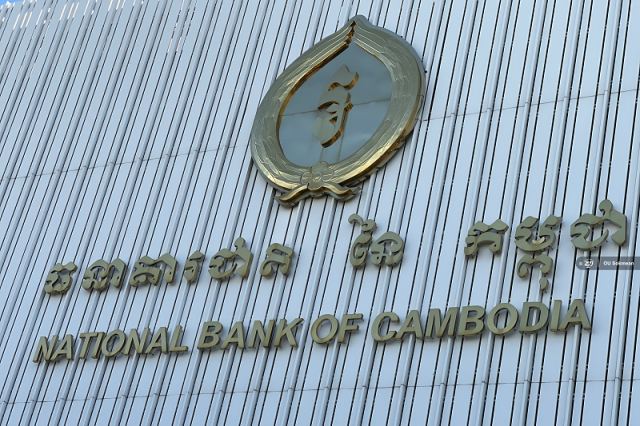Cambodia Cities Need Sustainability Rethink

- By Sao Phal Niseiy
- August 6, 2022 5:20 PM
Cambodia's urban development has been rapid over the past decades. However, the trend has been seen to be unsustainable while the country faces more daunting challenges, including the impacts of climate change, pollution, and increasing population. Ses Arunsakda, an architect by training whose research interest is in urban planning models, sat down with Cambodianess to discuss his research, during which he spoke of his thoughts and recommendation on what should be done to include sustainability in Cambodia’s urban planning.
Sao Phal Niseiy: You are an architect and a researcher at Future Forum while your research paper is on “rediscovering a Lost Identity”. Tell us more about your paper, what it is all about, and what prompted you to focus on this matter?
Ses Aronsakda: That was the title of my university thesis paper. At Future Forum, I authored "Walking the walk, Examining Phnom Penh's Urban Mobility.”
In this working paper, I explored the state of urban mobility in Phnom Penh by utilizing existing urban mobility indexes and modifying them to understand how well the capital’s transportation system is performing. I also worked to contextualize the results with a broader discussion of Cambodia’s urban planning policies and improvements that can be made based on the conclusions I could draw.
I chose this topic to study because there's not much literature that provides analysis and connects it back with government policy. Moreover, recommendations to improve Phnom Penh’s urban mobility are extremely sparse. The result demonstrated that Phnom Penh is heavily dependent on private vehicles, which is reinforced by the urban planning policy adopted.
Sao Phal Niseity: As a researcher, how do you define sustainable urbanization and related policies on improving sustainability?
Ses Aronsakda: My main perspective regarding sustainable development is not just to view it on the scale of individual buildings but to encourage people to consider sustainability from a city perspective and the surrounding regions. Sustainable development is a concerted and interconnected effort. Aspects such as transportation planning, land-use policy, building regulations and so on are all closely linked and must be considered in relation to each other. For example, a sustainable solution for transportation must be accompanied by changes in land use, revision to parking policies, additions to existing building regulations, and all these changes must be framed in the broader regional and national plans.
Sao Phal Niseiy: One of the Sustainable Development Goals (SDG) is to make cities inclusive, safe, resilient, and sustainable by 2030, and Cambodia also embraces this agenda. How do you see Cambodia’s trending urbanization? Is it on the right path toward achieving the goal?
Ses Aronsakda: Not at all. In its current configuration, the nation's urban planning policy lacks a coordinated approach which is indispensable for sustainable development. Moreover, within specific realms, our perspectives are focused on outdated modes. For example, urban transportation is dominated by the requirement to move vehicles rather than changing our focus to move people. So larger roads, expressways, overpasses, underground parking lots, etc. are prioritized, however they are financially costly, damage a city’s livability and only encourage more congestion. For Cambodia to reach its goals, it must re-evaluate its urban planning agendas and policies.
Sao Phal Niseiy: Why do you think it is critical for the country to ensure sustainability is embedded in all constructions and buildings?
Ses Aronsakda: The ethos of sustainability is indispensable. Buildings, both during construction throughout their lifespans, produce significant waste and demand enormous amounts of resources be it energy, water, and other materials. Even the most basic sustainability provision, like passive lighting and ventilation, water collection and recycling, and renewable energy, will have outsized positive impacts — for the building owners in terms of long-term savings and for the nation. And it goes beyond the direct impacts caused by the building; indirect effects like traffic congestion caused by a building designed around private vehicle usage must also be considered and mitigated.
Sao Phal Niseiy: What are the challenges in improving sustainability in Cambodia’s urbanization? What will be the repercussions if urbanization has not been done correctly and in a sustainable manner?
Ses Aronsakda: The primary challenge is the imbalance in information. Numerous research papers and case studies have proven the viability and practicality of sustainable solutions. What has yet to happen is the benefits being communicated convincingly to consumers, resulting in no demand for such provisions which then means that developers are not incentivized to change their approach.
The repercussions are already plain to see in the form of heatwaves, air pollution, noise pollution, flooding, etc. Our built environment will become even less hospitable, more dangerous, unhealthier, and more financially draining to maintain and to repair.
Sao Phal Niseiy: Pollution and climate change drive other extreme weather events like heat waves and damaging winds are expected to be frequent, negatively impacting the well-being of the people and environment in general. Cities like Phnom Penh are going to be affected more. What do you think of this, and what can be done to address or mitigate the impacts?
Ses Aronsakda: Simply put, Phnom Penh must avoid the allure of flashy, expensive, yet ill-conceived solutions that ignore the basic functions of a city. Instead, Cambodian planners must get the basics correct first then explore ways to enhance them in a systematic way. For example, when exploring the best ways to move people and goods in the most efficient, safe, and inclusive manner, cities like Phnom Penh should explore Transit Oriented Development. This type of development favors dense and mixed-use development, well-connected and inclusive spaces, prioritizing people and amenities over vehicle infrastructure, all of which encourage residents to make short trips by active commuting and use public transit for longer commutes, reducing the usage of private vehicles.
Sao Phal Niseiy: As a researcher you will be able to provide more outward-looking perspectives as well as inputs for urbanization policy formulation. What are your plans to promote sustainability in urbanization?
Ses Aronsakda: Right now, my focus is on providing concrete recommendations and solutions, be it in my writing, research, and designs. In these instances, I emphasize practicality, an awareness of the local context and Cambodia-specific solutions. I hope that my efforts will generate discussion not just on the problems that exist but on solutions that can and should be undertaken.















